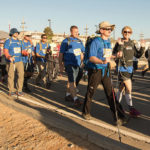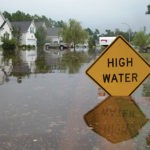
(NAPSI)—According to Department of Veterans Affairs (VA) statistics, there are over 130,000 legally blind veterans in America. Every year, another several thousand are added to the number either because of combat injuries, age, illness or other factors.
What’s Being Done
Fortunately, they’re not simply left in the dark. All over the country, the VA has set up residential and outpatient centers where former military persons who have impaired vision can learn to lead more independent, pleasant and productive lives.
There are two basic kinds of facilities. The Blind Rehabilitation Programs support blind and low-vision veterans and active-duty servicemembers in regaining their independence and quality of life to enable their successful integration into family and community life.
These places also support family and significant others to better understand visual impairment and foster the provision of appropriate support, to assist in enhancing home environments and to reduce caregiver burden.
The Visual Impairment Services Outpatient Rehabilitation (VISOR) programs use a team approach to provide services based on a thorough assessment of the veteran’s strengths, needs and personal goals.
Veterans and their families are encouraged to identify these goals and provide ongoing feedback regarding progress.
To enhance the quality of life for veterans and servicemembers experiencing vision loss, the Blinded Veterans Association (BVA) works with VA to help keep these places up to par. Recently, that organization’s Training Coordinator, Wade Davis, conducted a comprehensive and individualized Veterans Care Review at each of the 13 Blind Rehabilitation Centers nationwide. He is currently doing the same with the VISOR programs.
What Davis Does
Over several days, Davis visits each facility and meets separately with the staff and the veterans involved. He considers various aspects of the programs: orientation and mobility, living skills, manual skills, low-vision therapy, computer access training, low-vision clinic, optometry, eye clinic, ophthalmology, recreation therapy, social work, psychology, nursing, diabetic education, and pharmacy. He also talks to the Visual Impairment Services Team (VIST) Coordinators individually. Davis’ aim is to evaluate the full curriculum of care and to share findings with staff and the administration to promote and expand each facility’s successful procedures and generally make the facility as productive and safe as it can be for blinded veterans.
He also holds information sessions for the veterans and provides literature about BVA.
Davis’ BVA evaluations have brought about a number of improvements to blind rehabilitation services, such as making sure each of the facilities has the training and equipment it needs.
What BVA Does
All this is just one way BVA fulfills the mission it’s pursued since the end of World War II: to promote the welfare of blinded veterans so that, notwithstanding their disabilities, they may take their rightful place in the community and work with their fellow citizens toward the creation of a peaceful world. Through its free service programs, regional groups, resources, and advocacy before the legislative and executive branches of government, it makes life better for blinded veterans.
Where To Learn More
Because BVA advocates for all blinded veterans, whether they are members of the organization or not, and regardless of how their visual impairment occurred, veterans old and young and who experience vision loss can call BVA at (800) 669-7079, or visit www.bva.org, to get connected with the rehabilitative services they may need and have earned. For more about VA health care, visit www.va.gov/health.
On the Net:North American Precis Syndicate, Inc.(NAPSI)






